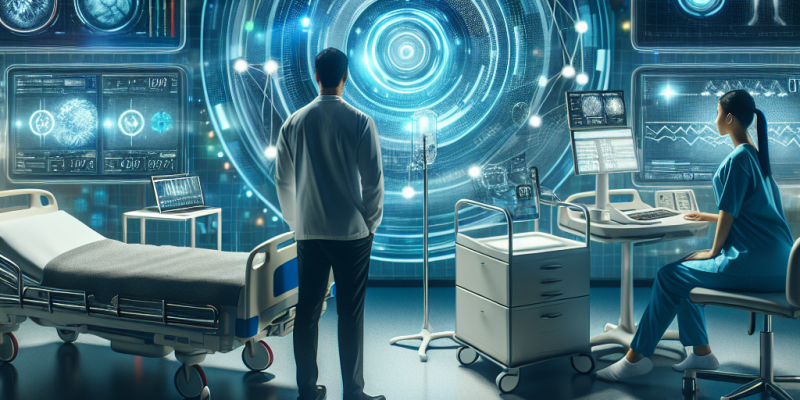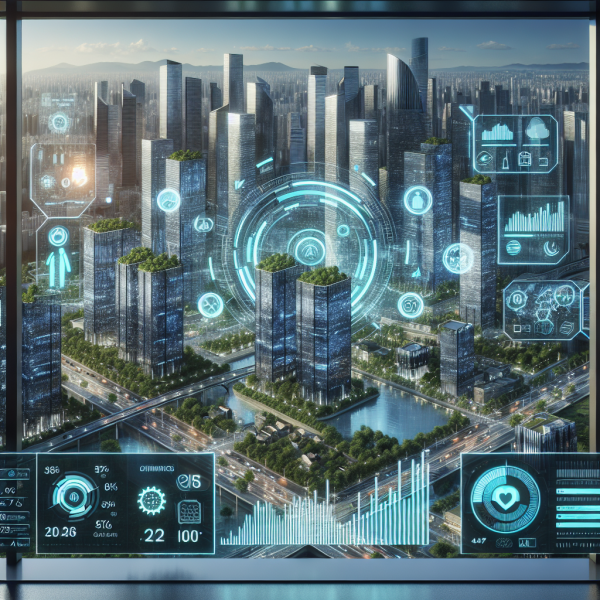Healthcare on the Cutting Edge: IoT Advancements in Patient Monitoring Systems

The rapid evolution of technology has transformed various sectors, and healthcare is no exception. In recent years, the Internet of Things (IoT) has emerged as a groundbreaking force, significantly enhancing patient monitoring systems and transforming the way healthcare providers deliver care. The integration of IoT technology into patient monitoring has not only improved patient outcomes but also allowed for more efficient use of resources and enhanced communication between patients and healthcare professionals. This article explores the advancements in IoT-powered patient monitoring systems, their benefits, and the challenges ahead.
Understanding IoT in Healthcare
At its core, the Internet of Things refers to the vast network of interconnected devices that communicate and share data through the internet. In the healthcare ecosystem, IoT devices can include wearable technology such as smartwatches, fitness trackers, implantable sensors, and remote monitoring tools. These devices collect real-time health data, which can then be transmitted to healthcare providers for analysis and intervention when necessary.
Enhancing Real-Time Patient Monitoring
One of the most significant advancements in IoT patient monitoring systems is the ability to provide real-time patient data. Wearable devices that track vital signs such as heart rate, blood pressure, body temperature, and oxygen levels have become increasingly sophisticated. For instance, smartwatches like the Apple Watch now include features to monitor ECG readings and even detect irregular heart rhythms, providing critical data that can be shared instantly with healthcare providers.
Remote patient monitoring (RPM) systems leverage IoT technology to facilitate continuous monitoring of patients with chronic illnesses, post-operative patients, and those living in remote areas. These systems enable doctors to receive alerts and updates about their patients’ conditions without requiring them to visit healthcare facilities regularly. The immediate availability of patient data allows for timely decision-making and interventions, potentially reducing hospital readmissions and improving overall patient outcomes.
Empowering Patients Through Connectivity
IoT advancements in patient monitoring systems also empower patients, enhancing their role in managing their own health. Patients can access their health data through mobile applications, allowing them to track their progress and engage in shared decision-making with their healthcare providers. This empowerment leads to increased health literacy, motivates individuals to adhere to treatment plans, and fosters a more collaborative relationship between patients and providers.
Moreover, telehealth solutions powered by IoT enable patients to have remote consultations with healthcare providers. This capability is particularly beneficial for individuals living in rural areas with limited access to healthcare services. With a simple internet connection, patients can connect with specialists, receive advice, and have their conditions monitored from the comfort of their homes.
Enhancing Efficiency and Reducing Costs
The integration of IoT technologies in patient monitoring systems has substantial implications for healthcare efficiency and cost reduction. By minimizing the need for physical appointments and hospital stays, healthcare organizations can save substantial costs associated with in-person care. Moreover, automated data collection reduces the administrative burden on healthcare staff, allowing them to focus on direct patient care.
In terms of resource allocation, IoT-powered monitoring systems help healthcare providers prioritize high-risk patients who may need immediate attention. For example, an elderly patient with multiple chronic conditions can be monitored closely, allowing healthcare providers to intervene at the first sign of deterioration. This proactive approach not only enhances the quality of care with timely interventions but also decreases the strain on healthcare facilities.
Addressing Privacy and Security Concerns
While the benefits of IoT advancements in patient monitoring systems are undeniable, concerns surrounding data privacy and security must be addressed. The collection and transmission of sensitive health data raise significant ethical and legal implications. Cybersecurity threats can compromise the integrity of the data, leading to unauthorized access and potential misuse.
Healthcare organizations investing in IoT technology must prioritize robust security measures, including encryption, multi-factor authentication, and regular software updates. Striking a balance between the convenience of connected devices and the protection of patient information is paramount for the widespread adoption of IoT in healthcare.
Looking Ahead: The Future of IoT in Patient Monitoring
The future of patient monitoring systems lies in the continued development and integration of IoT technologies. Innovations such as artificial intelligence (AI) and machine learning (ML) are expected to further enhance these systems, enabling predictive analytics that can improve patient outcomes. For instance, AI algorithms can analyze vast datasets to identify trends and predict adverse health events before they occur.
Moreover, the evolution of 5G technology will dramatically increase data transmission speeds, enhancing the real-time capabilities of IoT devices. This technological advancement may facilitate even more sophisticated monitoring systems that provide seamless connectivity and enhanced functionality.
Conclusion
The advancements in IoT technology have ushered in a new era of patient monitoring systems, revolutionizing the way healthcare is delivered. From improving real-time monitoring and patient engagement to enhancing efficiency and reducing costs, the impact of IoT on healthcare is profound. However, as the industry continues to evolve, the emphasis must remain on ensuring the security and privacy of patient data. With thoughtful implementation and continual innovation, IoT holds the potential to change the landscape of healthcare positively, making quality care more accessible and effective than ever before.













